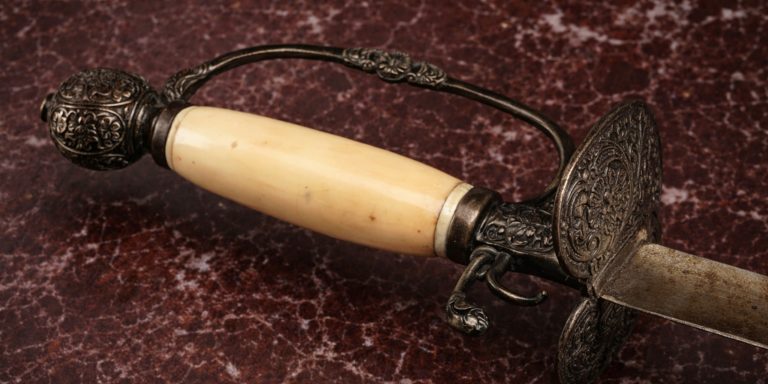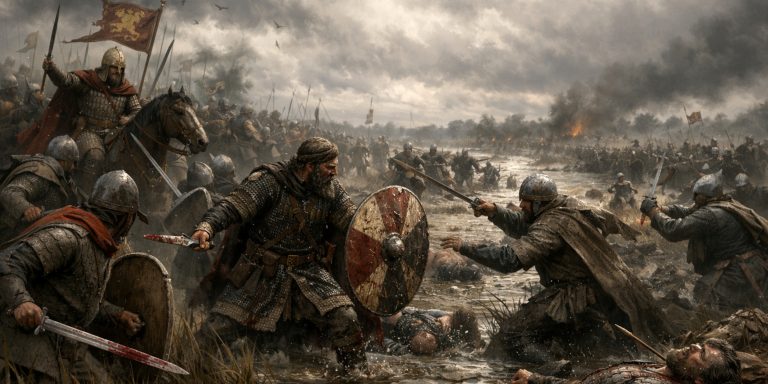
The wodao is a lesser-known but distinctive Chinese longsword, often associated with the Ming and Qing dynasties. Unlike the more common dao types used by infantry and cavalry, the wodao served a specialist role, blending native Chinese swordsmanship with influences from Japanese and Central Asian blades. Its name translates roughly to “sword of the Wo people” – a historical Chinese term for the Japanese – reflecting foreign influence in its form and function.
Specifications
| Feature | Detail |
|---|---|
| Blade type | Single-edged, slightly curved |
| Blade length | 80 to 100 cm (31 to 39 inches) |
| Total length | Typically 110 to 130 cm |
| Hilt type | Two-handed grip, often wood or wrapped cord |
| Guard | Disc-shaped or oval, occasionally absent |
| Construction | Forged high-carbon steel |
| Balance | Forward-weighted, designed for cutting |
History and Evolution
The wodao emerged during the Ming dynasty in response to specific military needs. After engagements with Japanese pirates (wokou) and samurai raiders along China’s eastern seaboard, Chinese generals saw the merit in longer, slashing swords akin to the Japanese katana.
Key developments:
- 16th century: General Qi Jiguang incorporated wodao training into his military manuals. He valued its reach and cutting power against armoured foes.
- Ming-Qing transition: Continued use by elite troops and guards, but never standardised like the liuyedao or yanmaodao.
- Decline: Gradually phased out as firearms and modern tactics reduced the role of long swords.
The wodao sat at a crossroads of tactical doctrine, neither a civilian weapon nor a mass-issue military blade, but a specialised choice for those trained in its use.
Advantages and Disadvantages
Advantages
- Extended reach allowed superior control of distance in combat
- Powerful slicing cuts due to the curve and weight distribution
- Two-handed grip improved leverage and cutting force
- Suited for both single combat and formations
Disadvantages
- Less versatile in confined or urban environments
- Required significant training to wield effectively
- Heavier and less agile than shorter dao types
- Lacked thrusting precision due to curve and balance
Comparison with Similar Weapons
| Weapon | Similarities | Differences |
|---|---|---|
| Katana | Curved blade, two-handed grip, cutting focus | Katana typically shorter and more agile |
| Liuyedao | Single-edged Chinese sabre | Liuyedao is lighter, one-handed, mass-issued |
| Changdao | Long Chinese sword for anti-cavalry | Changdao is heavier, more polearm-like |
| Jian | Traditional double-edged Chinese sword | Jian is straighter, used for thrusting |
The wodao occupies a unique middle ground between the katana and traditional Chinese sabres, prioritising reach and cutting over agility or thrusting finesse.
Legacy
Though it never became a frontline standard weapon, the wodao remains a significant artefact of Chinese martial history. It is studied in some modern martial arts circles, especially within traditionalist schools that focus on Ming military techniques. It also holds cultural relevance in Chinese media and martial arts films that explore historical or fantasy settings.
Where to See
- National Museum of China, Beijing – Includes Ming-era swords with features comparable to the wodao
- Shenyang Palace Museum – Displays Qing military swords with wodao influence
- Military Museum of the Chinese People’s Revolution – Occasional rotating exhibits
- Private collections – Some examples survive in elite Chinese or international collections
Authentic wodao examples are rare due to their non-standardised production and the wear of time. Surviving specimens are often reclassified or mislabelled due to similarities with changdao and liuyedao forms.
Collector’s Guide and Auction Prices
What to Look For:
- Blade curvature and length over 90 cm
- Two-handed hilt with Ming-Qing stylistic features
- Signs of high-carbon folded steel
- Minimal ornamentation, focused on practicality
Auction Market Trends:
| Period | Typical Price Range |
|---|---|
| Ming dynasty | £7,000 to £20,000 (if intact) |
| Qing dynasty | £4,000 to £12,000 |
| Replicas | £100 to £500 (functional or decorative) |
Due to limited production and survival, genuine wodao are rarely seen in Western auctions. When they do appear, provenance is critical. Expect high demand from Asian collectors, especially when tied to military figures like Qi Jiguang.
The wodao stands as a reminder of cross-cultural exchange in East Asian martial history. Neither purely Chinese nor wholly foreign in origin, it reflects a pragmatic response to battlefield conditions that required something different from the norm. While it never dominated armies, it held a place among those who trained to master it.



